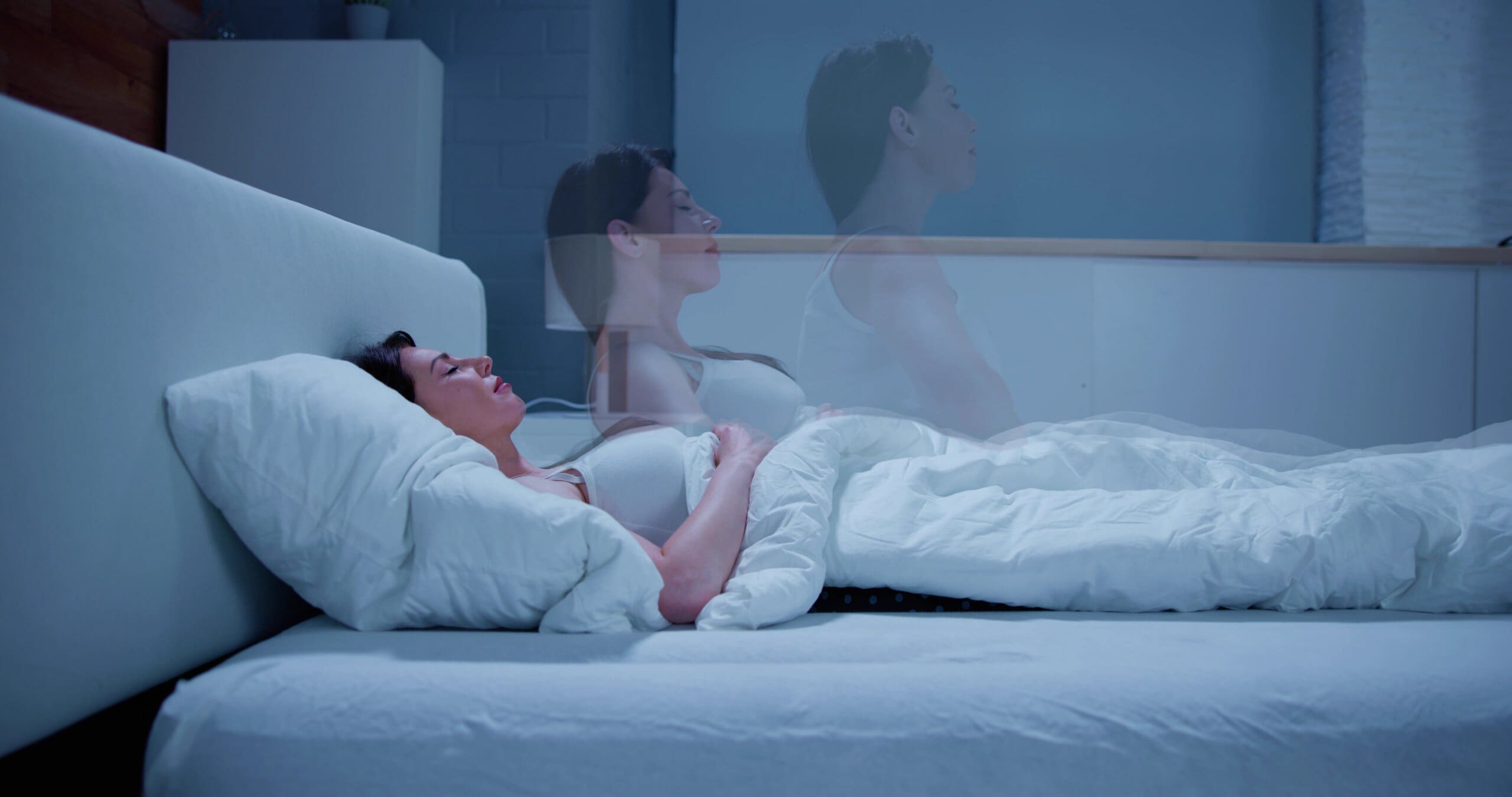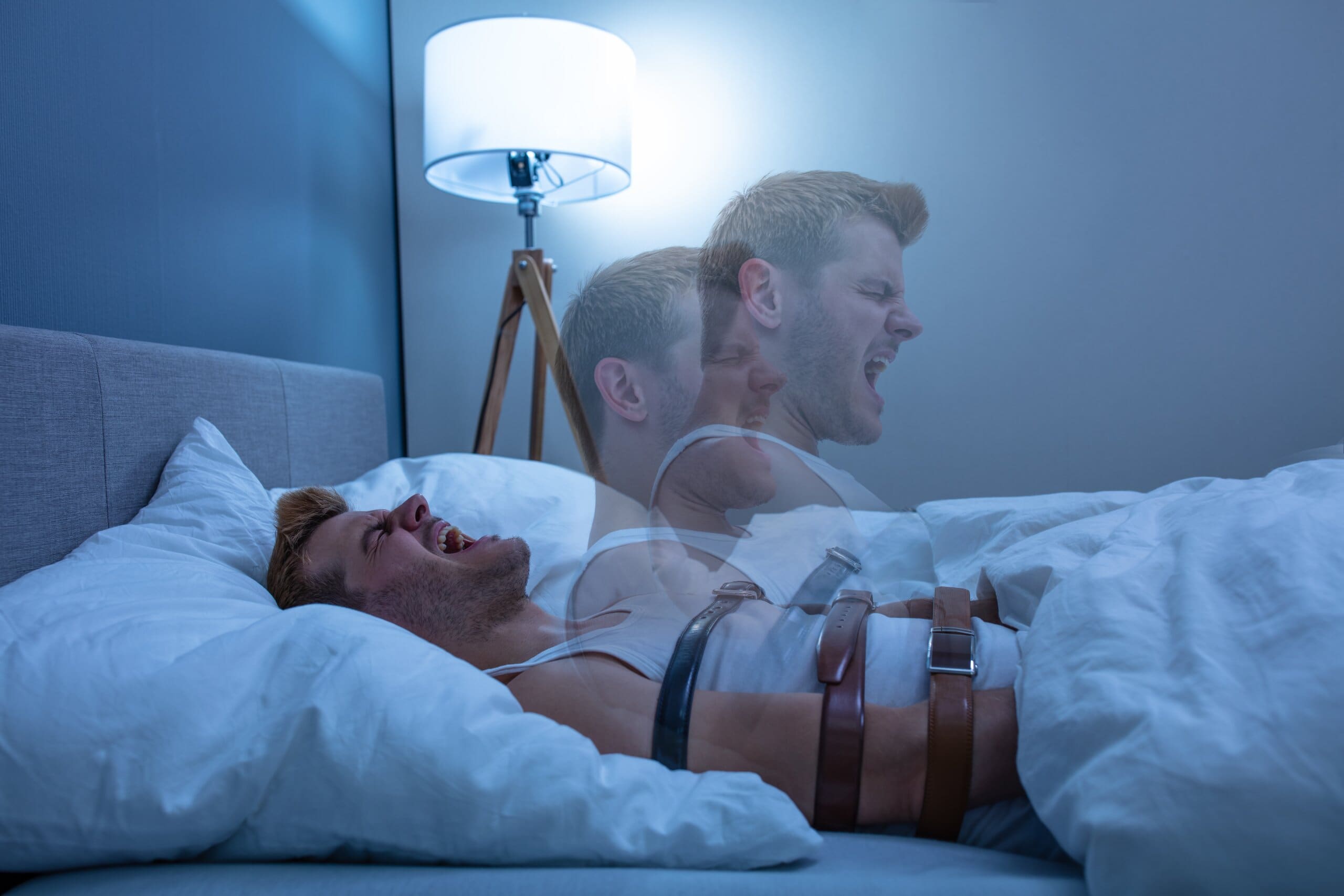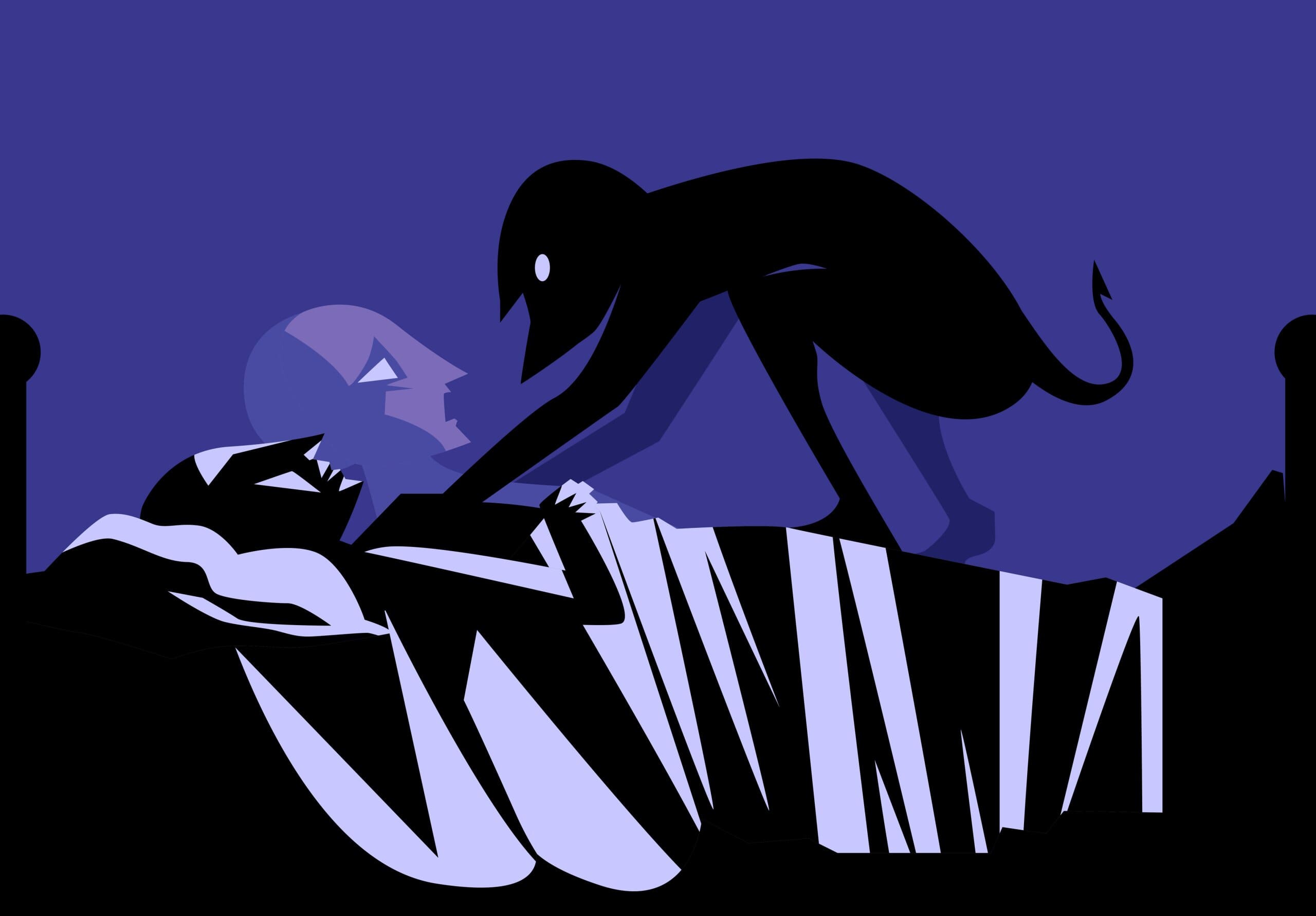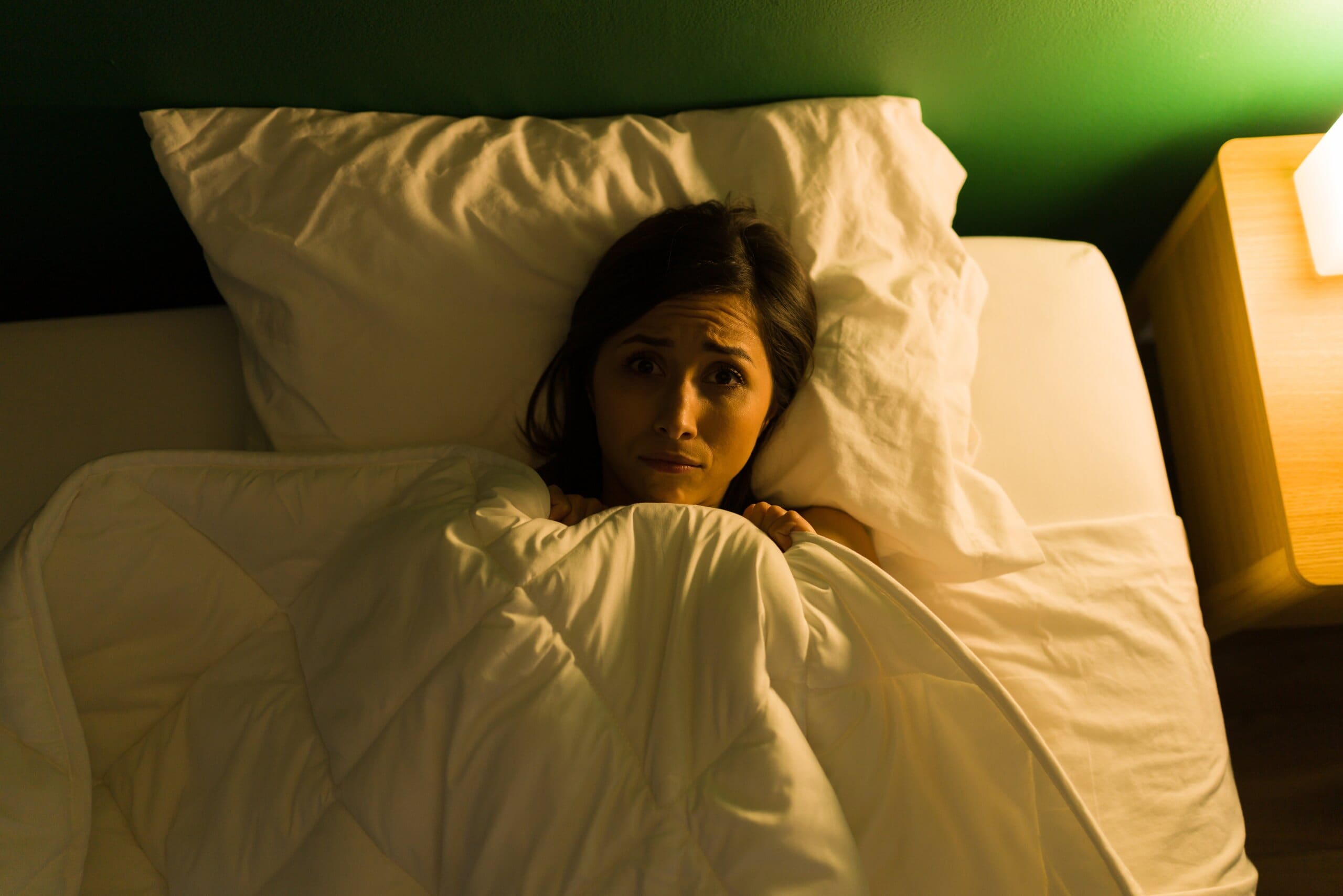Heard everyone talking about ‘sleep paralysis demons’, but not sure what the difference is between that and a nightmare? You’re not the only one. We’ve broken down exactly what sleep paralysis is, how it differs from general night terrors, and how you can ensure you never experience one.

What is sleep paralysis?
To put it simply, sleep paralysis occurs when your conscious state and dreaming state get ‘mixed up’, and your brain can’t comprehend what’s real and what’s not.
When we experience ‘deep sleep’, we go into what is called a REM state (Rapid Eye Movement) which is where most of our dreaming is done and our body is in a restful paralysis. This paralysis keeps you safe, preventing you from injuring yourself by acting out your dreams during your deep sleep. However, sometimes it’s possible to ‘wake up’ while still in this REM state, where your body is still paralysed, but you can see your surroundings.
What happens during sleep paralysis?
Sleep paralysis sounds scary, and it is - it’s usually accompanied by feelings of intense anxiety and fear, however while it feels like it lasts an eternity, it actually only lasts a few seconds or minutes, before your brain realises and wakes you up properly.
Many people who suffer from this parasomnia describe a feeling of someone pushing down on their chest, or their whole body. The experience of not being able to move, plus your heart rate increasing, can make it feel like something is physically holding you down. This can then trigger the feeling of an ominous creature or person hovering over you.
During this paralysis, many people experience hallucinations brought on by the intense panic and anxiety. These hallucinations can be visual, auditory, or both, or be a more general feeling that someone is in the room with you.
There are three types of hallucinations you might experience during sleep paralysis:
- Intruder hallucinations: seeing or sensing something in the room with you - this is where you might experience a ‘sleep paralysis demon’
- Vestibular-motor hallucinations: imagined sensations in the body, such as an out-of-body experience, or flying
- Chest-pressure hallucinations: a feeling of suffocation or that something is pressing down on your chest

What is a sleep paralysis demon?
Throughout history, people suffering from sleep paralysis have noted hallucinating a ‘demon’ or similar creature, brought on by the mixing of dreaming and reality, as well as intense panic.
Often, this sleep demon will ‘sit’ on a person’s chest, making it impossible to move. Of course, we know that this paralysis is due to your body’s REM state, but in the moment, it can feel very real.
TikTok users began using the term ‘sleep paralysis demon’ as a lighthearted insult to describe something unattractive, or 'cringe'. TikTokers have also been making fun of their own experience with sleep demons, such as this video from user @racobell.
While Gen-Z seems to be taking the idea of sleep paralysis in their stride, it can be super scary for those who regularly suffer from the phenomenon.
Why does sleep paralysis happen?
Sleep paralysis typically occurs in people who are already sleep deprived. Your body needs REM sleep in order to process memories and for healthy brain development. If you suffer from frequent insomnia, or are simply sleep deprived, your body will be desperate to go into a REM sleep cycle. With the rest of your body fighting the urge to sleep, it’s no wonder your dreaming and conscious states get mixed up.
Anxiety and panic disorders can also make you more susceptible to sleep paralysis, and potentially make hallucinations worse.
You might feel like you’re cursed or being haunted, but rest assured that it’s just your mind playing tricks on you. Your vivid dreams are just being projected into the real world, resulting in sleep-related hallucinations.
While we know this now, sleep paralysis has been documented for thousands of years, with sleep paralysis demons becoming huge parts of different cultures’ folklore, each coming up with different reasons for the phenomenon.
For example, the earliest mention of sleep demons comes from 2400 BC in Mesopotamia, now Iraq. Here, they wrote of Lilutu, a female demon. Similarly, in Brazilian folklore, a pisadeira is an old woman who will walk on the chests of those who sleep on their backs with a full stomach.

How do I wake up from sleep paralysis?
If you’re wondering how to wake up from sleep paralysis in the moment, unfortunately, there’s no sure fire way of instantly snapping out of it. However, there are some things you can do to ease the panic and get it over quicker.
Tips for waking up from sleep paralysis:
- Calm your breathing - This is the most important thing to do. When you start to panic, your breathing will become fast and erratic as you begin to have an anxiety attack. Slowing your breathing and attempting to calm your mind will make it less likely that you’ll suffer a panic attack. Plus, by calming your breathing and relieving the pressure on your lungs, you’re less likely to hallucinate something pressing down on your chest.
- Remember it’s not real - While this may seem easier said than done, you should try to remember the facts. Even though you think you can see something in the room with you, you know it’s actually just your dreams mixing with reality. Understanding that you’re experiencing an episode of sleep paralysis can make it easier to accept it, rather than panicking and worsening your symptoms. You simply need to relax and wait for your brain and body to realise what’s happening.
- Try to make small body movements - If you can, try to make small movements, such as wiggling your fingers or closing your eyelids. This may trigger your brain to send the right signals to the rest of your body, telling it that you’re awake now, so it can come out of that restful, protective paralysis.
- Try to go back to sleep - Although you might be scared, going back to sleep can prevent your episode worsening, or experiencing hallucinations. Try to go back to sleep and back into your REM dreaming state - your brain can then go through its sleep cycles properly, so you can then wake up naturally as you usually would.

How to prevent sleep paralysis
Whether you’ve experienced episodes of sleep paralysis, or are simply trying to avoid ever having to, the most important thing to do is to ensure you are getting enough sleep.
Anxiety and other mental health problems can make sleep paralysis more likely, as they tend to go hand in hand with an irregular sleeping pattern. Our guide on how mental health impacts sleep deprivation can give you more information on this.
Sticking to a consistent sleeping schedule is key for preventing sleep paralysis, and dealing with night terrors in general.
Relaxing before bed can massively improve your chances of sleeping well through the night. Our guide to the ultimate bedtime routine will give you some pointers, as well as how to include self-care in your nightly routine.
Calming your mind and body will make it easier for your brain to process the sleep cycles properly, preventing you from waking up in the night, potentially in a paralysed state. Ensuring your sleeping environment is set up for proper sleep is important, too. A comfy bed, supportive mattress and proper blinds and curtains are a must - by blocking out light during the night, you’re signalling to your brain that it’s time to sleep.




